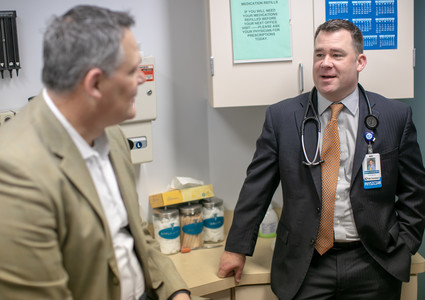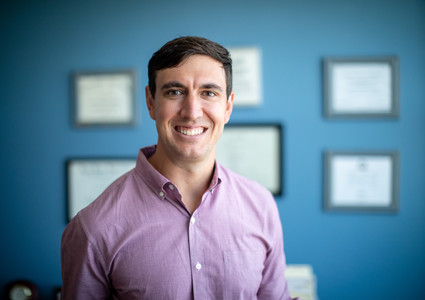





Today's Medicine
‘Equally Exemplary’: Methodist Physicians Answer Questions Surrounding MD and DO
Published: Dec. 29, 2021

When searching for a provider, patients find that some physicians have the letters “MD” listed after their names, and others have “DO.”
In simple terms, MD stands for Doctor of Medicine and DO translates to Doctor of Osteopathic Medicine. But what are the differences between a doctor who is MD and one who is DO? Why do medical students pursue one or the other? Will patients recognize a difference?
Gregory Hutteger, DO, and Shane Stephenson, MD – family medicine physicians with Methodist Physicians Clinic – provided answers to those and other questions in hopes of clearing up confusion surrounding the two types of providers.


Is there a main difference between a physician who is MD and one who is DO?
Dr. Hutteger: The main difference is that a DO is trained in osteopathic manipulative medicine, which uses hands-on techniques to treat structural and functional disorders to promote healing. Osteopathic physicians are unique to the United States.
Dr. Stephenson: I would agree that the main difference is that DOs are trained in osteopathic manipulation while MDs are not.
What are some of the most common misconceptions people have when trying to distinguish between MDs and DOs?
Dr. Hutteger: A common misconception is that DOs practice alternative care or only provide osteopathic manipulative treatment (OMT). Some patients think that DOs are similar to chiropractors, but they are fully licensed physicians who practice in all fields of medicine in the U.S.
Dr. Stephenson: I don’t think there are many misconceptions anymore. I’d say most people know us as “doctor” but don’t necessarily pay attention to the letters at the back of the name. I have worked and trained with DOs and MDs, and there is no difference in my mind in the quality of care they provide.
What are some of the differences that medical school students experience when training to become professionals?
Dr. Hutteger: DOs pride themselves on treating the whole patient based on the philosophy that all body systems are interrelated. They learn OMT in addition to the modern medical curriculum. There are now more similarities in training at the residency level since DOs and MDs have the opportunity to be trained in osteopathic manipulative medicine.
Dr. Stephenson: I would say that a larger percentage of DOs go into primary care, whereas MDs often pursue other subspecialties. That is not to say there are not specialists who are DO trained, however. According to 2019 Association of American Medical Colleges data, more than 56% of DOs practice in primary care specialties – 31.4% are family physicians, 18.1% are internists, and 6.89% are pediatricians.
By comparison, less than 30% of active U.S. physicians with MD credentials practice in primary care specialties – 11.3% are family physicians or in general practice, 10.6% are internists and 6.8% are pediatricians.
Why do people choose to receive one degree or the other?
Dr. Hutteger: This is more of a personal decision and is likely different for each physician. The positive experience I had with my family physician growing up introduced me to osteopathic medicine.
Dr. Stephenson: I think it’s up to the person. The first and one of the hardest parts of becoming a doctor is getting into medical school. I know a lot of people didn’t really care if it was MD or DO – they just wanted to start medical training and progress towards a career they are passionate about.
What should patients expect when seeing an MD or a DO?
Dr. Hutteger: At Methodist, patients should expect a caring and board-certified physician regardless of whether they’re seeing an MD or a DO. If they are wanting to have osteopathic manipulation, they may want to check to make sure their physician offers the treatment prior to scheduling.
Dr. Stephenson: Honestly, I think they will get the same excellent care from a passionate, caring and knowledgeable physician regardless of what letters stand at the back of their name.
Do patients care about the difference? Will they notice a difference in the care they receive?
Dr. Hutteger: When I started 15 years ago in family medicine, I had some questions from patients, but I rarely get asked today. I was the first DO in my group at that time, and now three out of seven are DOs. The profession is rapidly growing, and there are over 130,000 DOs across the U.S. I don’t believe a patient will notice any difference in the care they receive.
Dr. Stephenson: I don’t think they’ll notice any difference. I trained with DOs and MDs. I also work with MDs and DOs. I think they are equally exemplary, especially at Methodist.
More Resources
- Find a primary care provider.
- Read similar articles in Today’s Medicine.
- Explore Methodist’s specialties.

